FOX NEWS: Matthew Modine 'Stranger Things' star shares why he got his license to officiate weddings4/3/2024
"A friend of mine (Adam Nelson) was getting married (Nicole Nelson), and he said "I would love for you to be the person who officiates my wedding." And he was actually the person who went out of his way to get all of the paperwork, and took me to the place where you become an Officiant, and it was his wedding that was the first time I had done it. It's a wonderful thing to be able to do. To speak on behalf of a group of people. The Officiant is someone who is speaking but he's really speaking for everyone that's at that thing. So when you say "Dearly Beloved, 'WE' are gathered here..." you are bringing people together in what, hopefully, can become a great bond - a union - between two human beings, and that's a beautiful thing."
Watch the interview here: https://www.foxnews.com/video/6350218388112
0 Comments
The stage is set, the lights are dimming, and the stars of the small screen are stepping out from the comfort of their chateau and onto the whirlwind adventure that is the "Dare to Do It" tour. Dick and Angel Strawbridge, the dynamic duo behind the beloved television series "Escape To The Chateau," have touched down in the USA & Canada, bringing with them a blend of charm, wit, and a touch of DIY magic. For those who haven't had the pleasure of tuning in, "Escape To The Chateau" chronicles the remarkable journey of Dick and Angel Strawbridge, who, in 2014, traded in the hustle and bustle of modern life for a crumbling fairytale castle in the heart of France. What followed was a rollercoaster ride of renovations, restorations, and revelations, all captured for the world to see. But the adventure doesn't stop at the chateau gates. Now, armed with tales of triumph and tribulation, Dick and Angel are taking their show on the road, crossing the pond for their first-ever theater tour in North America. And where better to kick things off than the city that never sleeps? That's right – on March 11th, 2024, the spotlight will shine on New York City as the Strawbridges descend upon The Town Hall for a night of storytelling, laughter, and maybe even a few surprises. In a recent statement, Dick and Angel expressed their gratitude to fans both old and new: "Firstly, thank you to everyone who has bought a ticket to come and see us. We are literally blown away by the love from across the pond. It's a dream come true to be taking Arthur, Dorothy, Grandma & Papi on the road to see and experience your gorgeous country and friendly hospitality.” And the excitement is palpable – not just from the fans eagerly snapping up tickets, but from Dick and Angel themselves. "Prizes are being made, outfits are being carefully considered, and the excitement is high…!" they shared on social media. With their infectious enthusiasm and boundless energy, it's no wonder audiences are clamoring to join the adventure. But what exactly can fans expect from this whirlwind tour? Well, if their past exploits are anything to go by, a little bit of everything. From heartwarming anecdotes to behind-the-scenes secrets, Dick and Angel promise to give audiences a deeper insight into their lives – both on and off the screen. And with a theater as storied as The Town Hall as their backdrop, the stage is set for a night to remember. Of course, no Strawbridge production would be complete without a healthy dose of DIY ingenuity. After all, these are the same folks who turned a dilapidated castle into a picture-perfect paradise. So, expect to see a few tricks up their sleeves – and maybe even pick up a few renovation tips along the way. But perhaps the most exciting part of the tour is the chance for fans to meet the stars themselves. With meet-and-greet opportunities and photo ops galore, it's a rare chance to rub elbows with the royalty of reality TV. And judging by the reactions online, fans are counting down the days until they can do just that. "OMG!!!! New York!! Getting tickets," exclaimed one eager fan, while another chimed in, "Just bought tickets for NYC! Can't wait!!" It's clear that the Strawbridges have struck a chord with audiences on both sides of the Atlantic – and now, they're ready to take their show on the road. So, whether you're a die-hard fan of "Escape To The Chateau" or simply in the mood for a night of entertainment, be sure to snag your tickets for the "Dare to Do It" tour. With stops in Seattle, Atlanta, Toronto, Boston, and of course, New York City, it's a once-in-a-lifetime opportunity to experience the magic of the chateau up close and personal.
As Dick and Angel themselves would say, "Let the adventure begin!” For more information, visit https://thechateau.tv/us-tour-2024 Produced by Fane: www.fane.co.uk Insta: @the_chateau_tv @escape_to_the_chateau Facebook: /chateaudelamottehusson /escapetothechateau Bryson’s Mental Health Film “Sideways For Attention” is Set to Make a Splash
Brady Bryson's career path stands out as a testament to talent, perseverance, and a genuine love for storytelling. Bryson’s work reflects a deep-seated passion for the craft and a commitment to authenticity from his humble beginnings as a child actor to his current status as a multifaceted artist. "I've always been drawn to the power of storytelling," Bryson reflects. "It's a privilege to be able to bring characters to life and share their experiences with audiences.” Bryson's foray into the world of acting began at the tender age of eleven, fueled by a burning desire to share narratives that resonate with audiences. His debut role in the poignant short film "Mama" marked the inception of a career defined by persistence. Read the full story by clicking the photo above. Interested media contact Workhouse, CEO, Adam Nelson via [email protected] Matthew Modine is a familiar face on the silver screen.
He is known for his roles in "Full Metal Jacket," "Birdy" and more recently, "Stranger Things" and Universal's "Oppenheimer." On Sunday night, Modine received the Maverick Spirit Award at the Cinequest Film Festival in San Jose. NBC Bay Area's Emma Goss spoke with Modine about the roles that have meant the most to him and his latest indie film about to hit theaters. Watch the interview by clicking the photo to see the video. “Remember the good old days when a million dollars seemed like a fortune? Times have most certainly changed, but not your chances,” said Adam Nelson, founder and CEO of Workhouse. “As a boomer, you’ve likely accumulated a wealth of experience, which, unlike your back, doesn’t actually depreciate with age.”
Nelson added that it’s never too late to learn about compound interest, and if you were waiting for the right time to start saving, while yesterday was the perfect day, “today’s not too bad either.” According to him, age can be a surprisingly savvy ally in your financial journey — meaning that you’re potentially more skilled at dodging financial pitfalls and can make more informed decisions. “Remember, Warren Buffett made 99% of his wealth after his 50s. So, if you keep these sentiments front and center, you’ll get closer to Tycoon status — with style, dollars, and sense,” he added. Small Print: *Adam Nelson is not an actual Millionaire Read the full article: https://finance.yahoo.com/news/become-millionaire-60s-130033585.html In the ever-evolving landscape of independent cinema, emerging talents often shine through with stories that resonate deeply with audiences. Brady Oliver Bryson, a newcomer to the directorial scene, has made a notable entry with his debut feature film, “Sideways for Attention,” a raw and introspective exploration of human struggles set against the backdrop of New York City. Bryson’s journey to filmmaking is marked by his unwavering passion for storytelling and a commitment to authenticity. Drawing inspiration from both personal experiences and cinematic influences, Bryson embarked on a creative endeavor that would challenge conventions and push the boundaries of traditional narrative storytelling. Reflecting on the genesis of the project, Bryson shares, “I wanted to create a film that would provoke thought and stir emotions. ‘Sideways for Attention’ is my attempt to confront difficult themes head-on and spark conversations about mental health and resilience.” FILM DAILY: How did you come up with the idea for this script? Bryson: Sideways for Attention was always going to be a film. My inspiration for this project was a desire to shock my audience out of complacency. I wanted people to stop what they were doing and pay attention. I wanted to find a way to bring internal and external trauma to the screen that would allow people to identify with the suffering and behaviors of any one of the characters and then think about the choices that they may have made in their own lives. FILM DAILY: What genre would you consider Sideways for Attention? Bryson: Sideways for Attention is hard for me to categorize. While it is a drama, certainly a dark one, there are also some comedic elements, and suspenseful moments. Critics have also had trouble pigeon-holing the film and have considered it in many different categories. SFA has been compared to French new wave, French Extremism, drama and even sometimes a Noir/thriller. FILM DAILY: Who is Chloe? Bryson: Chloe is our main character. She is a complex woman with a difficult past, coming of age at the turn of the millennium. Like all of us at some point in our lives, Chloe has had to adapt, struggle and overcome many obstacles. Unlike many of us though, the trauma she has endured, both internal and external, is severe and extensive. FILM DAILY: What does “sideways for attention” mean anyway? Bryson: The entire saying goes “sideways for attention, longways for results” which to people who don’t understand mental illness implies that if you’re cutting you aren’t really attempting suicide the right way. I see it as a cry for help. Chloe, the main character, cuts herself to deal with the trauma that she has endured. As “Sideways for Attention” continues to garner attention on the festival circuit, Bryson remains focused on the craft of storytelling, eager to explore new avenues of creative expression. His passion for authenticity and empathy shines through in every frame, inviting audiences to engage with the film on a deeply personal level. Bryson’s journey as a filmmaker is just beginning, but his impact on the world of independent cinema is already palpable. With “Sideways for Attention,” he has proven himself as a respected writer/actor/director with a keen understanding of the human condition. As audiences embrace Bryson’s debut feature, one thing is certain: his voice will continue to resonate in the world of cinema, inspiring others to explore the depths of human experience through the power of storytelling. A Chance Encounter with Rob Reiner
BRYSON: For my 10th birthday, my parents took me to the Nickelodeon Kids Choice Awards. It was being filmed at UCLA that year, and we got tickets for the cheap seats in the bleachers. During the commercial breaks, the kids were allowed to run down to the floor and get autographs from the celebrities. Slash was there; I recognized him from “Guitar Hero.” Mom pointed out an older man sitting by himself with two bags of popcorn on his lap. “Go talk to him, ask him for advice,” she said. I spoke with Rob Reiner about what it’s like being a director and asked him how he got to where he is now. He gave me some advice which I still follow to this day. He told me that to understand what it means to be a director truly, I had first to become an actor. If I really wanted to become a director, he said, it was essential for me to understand what is possible on the actors’ side of the camera. I proudly returned to our seats on the bleachers of the Pauley Pavilion and announced, “I still want to become a director, but I have to become an actor first.” Brady Bryson by the numbers: Screenplay Competition Semi-Finalist: 2023 ““Sideways for Attention” Santa Barbara International Screenplay Awards Screenplay Official Selection 2023 “Sideways for Attention” Miami Screenplay Awards 2023 “Sideways for Attention” Los Angeles International Screenplay Awards Short Film Competition Awards: 2021 WorldFest-Houston International Film Festival “Where To Now?” Gold Remi Award 2021 Paris International Short Festival “Where To Now?” 2016 Hollywood International Moving Pictures Film Festival “57 Days” Acting Awards and Nominations: 2018 Winner: Best Dramatic Actor, Bucks County Playhouse Theater Festival 2014 Nominee: Best Performance in a Short Film, Young Artists Awards 2013 Nominee: Best Performance in a TV Series, Young Artists Awards 2013 Nominee: Best Performance in a Short Film, Young Artists Awards 2012 Nominee: Best Performance in a Short Film, Young Artists Awards To learn more about Brady Bryson’s films, visit https://www.mrweirdbob.com As the fashion world continually seeks fresh landscapes, Minneapolis, a city more renowned for its musical heritage than its sartorial offerings, is emerging as an unexpected but vibrant fashion locale. Spearheading this stylish revolution is Joy Teiken, the mastermind behind Joynoelle, who is boldly reimagining fashion far from the traditional capitals of glamour. Joy Teiken is an original. Her atelier, nestled in the heart of Minneapolis, is a fusion of art and fashion, where each creation is a narrative in itself. Teiken's journey to establishing her brand in a non-traditional fashion city has been a path less traveled, marked by both ingenuity and resilience. By anchoring her atelier in Minneapolis, she defies the notion that fashion's heart beats only in cities like New York or Paris. Instead, she proves that creativity and innovation can blossom anywhere, and she’s reshaping the fashion map. MSN: What challenges have you faced in the fashion industry, and how have you overcome them? JOY TEIKEN: My biggest challenge has been my location. Minneapolis has a vibrant design and art community but isn’t known for its fashion. It’s been a perfect community to raise my son, with amazing public schools and a quality of life. And I’ve been able to create a small business with a lot of community support. The essence of Teiken's design philosophy is rooted in uniqueness and meticulous craftsmanship. Each piece she conceptualizes is not merely a component of a collection but a standalone. The textural richness of her designs, highlighted in photographs here by Gentl and Hyers, showcases her commitment to intricate detailing and an unparalleled aesthetic. Her design techniques, ranging from hand dyeing to fabric manipulation, are not just methods but a dialogue between the designer and her medium, allowing her to imprint her vision onto every creation. Teiken's transition from sculpting clay to shaping fabric has endowed her work with a distinctive three-dimensional quality. This artistic background informs her approach to fashion, where she treats fabric not merely as a material but as a canvas for her imagination. Each alteration and embellishment she makes is a step towards realizing her artistic vision, blending her personal narrative with the threads of her creations. MSN: Can you discuss a significant obstacle you've encountered in your career and how you addressed it? JOY TEIKEN: Years ago, I had crippling anxiety and wasn’t able to get on a plane to travel. This disrupted my whole business trajectory. I had to change what I wanted and decided instead of going bigger, I’d go much smaller and take care of myself. I’ve been able to work through this aspect of myself and feel it’s made me a more self-aware, focused designer. Facing personal challenges such as anxiety, Teiken’s career is a narrative of overcoming adversity. Rather than allowing these obstacles to stifle her creativity, she adapted her business model, focusing on a smaller scale that nurtured her mental well-being. This decision not only catalyzed her personal development but also sharpened her design focus, leading to a more profound and introspective approach to fashion. The relationship between designer and client also transcends the typical boundaries of fashion retail. Teiken offers a personalized design experience, engaging clients in the creative process from conception to completion. This journey, whether it unfolds in the intimate setting of her atelier or through tailored client visits, transforms a concept into a tangible expression of style and individuality. MSN: What are some of the biggest misconceptions people have about the fashion industry? JOY TEIKEN: That you have to be big to have success. Owning a small design house and creating on your own terms is freeing and allows for a full, multi-dimensional life. Teiken’s selection of Minneapolis as the backdrop for her creative endeavors is a conscious homage to the city’s dynamic artistic community and its influence on her work. The balanced lifestyle afforded by Minneapolis has been crucial in harmonizing her professional and personal realms. In this city, Teiken has found a workspace, a source of inspiration, and a community that overwhelmingly responds to her vision. Joy Teiken’s story in the fashion industry transcends a conventional narrative of success; it is a testament to the power of authenticity and the enduring spirit of creativity. Her journey with Joynoelle is a reminder that fashion’s true essence lies not in geographical locations but in the boundless realms of imagination and innovation. In Minneapolis’s unexpected yet fertile grounds, Teiken has woven her experiences, artistic insights, and design aspirations into a compelling and elegant fairytale. To view Joynoelle's SS/24 collection, visit joynoelle.com, and follow her on Instagram @joynoelle.atelier
Follow the house that work built on our just launched socially creative TikTok channel {WORKHOUSEPR}
See exclusive cinematic sensations only found here https://www.tiktok.com/@workhousepr "Escape to the Chateau" TV stars Dick & Angel Strawbridge Premiere Their First Theater Tour of USA & Canada Dick and Angel Strawbridge, the stars of the hit television series, "Escape To The Chateau," head to the US and Canada with their hugely successful "Dare to Do It Tour." The six-city North American tour opens in Los Angeles this Thursday, 24 February 2024, and includes stops in Seattle, Atlanta, Toronto, Boston, and New York City. Tour dates and venues are listed below. All tickets are on sale now. Visit thechateau.tv/us-tour-2024 for more information. Los Angeles, CA at The Theatre at Ace Hotel (February 24, 2024) Seattle, WA at Paramount Theatre (February 26, 2024) Atlanta, GA at Atlanta Symphony Hall (March 1, 2024) Toronto, ON at Meridian Hall (March 5, 2024) Boston, MA at Emerson Colonial Theatre (March 8, 2024) New York City at The Town Hall (March 11, 2024) In 2014, Dick and Angel embarked on an adventure of a lifetime with their two children, Arthur and Dorothy, and Angel’s parents, Jenni and Steve. The dream was to find their “forever home” that could double as a business and sustain their multi-generational family. After years of searching, they found Chateau de la Motte Husson, a run-down fairy-tale castle located in the stunning Pays da la Loire, France. It had no water, electricity, or heating and came with a 300-page survey of why not to buy it! It was the start of an incredible journey that no one could predict.
Millions of viewers across the world have been enthralled over the past few years by the family’s adventures. However, retired Lieutenant Colonel, engineer, and chef Dick and his entrepreneur and designer wife Angel still have many untold tales to tell. Dick and Angel state, “We are so excited about our family adventure to the US and Canada. It’s such an honor for us to finally meet fans of Escape To The Chateau across the pond, and we can’t wait to give our audience a deeper insight into our lives and who we are. We’re looking forward to having lots of fun on our exciting whistle-stop tour!” Hot on the heels of sold-out tours in the UK and Australia/New Zealand, audiences can expect fascinating insights into what inspired the husband-and-wife team, who fell in love in 2010, to bring their fairy-tale castle back to life and turn it into the flourishing and continually evolving business it is today. They may be an ‘odd couple,’ but the charismatic pair have a love story to share. During this highly entertaining evening, the duo explains who they are, where they have come from, how they met, and why they dared to do it! With stories to tell, games to play, and laughs to share, join Dick and Angel for a truly unmissable night at the theatre. Interested media who wish to obtain show tickets and arrange interviews with Dick and Angel Strawbridge are invited to contact Workhouse, CEO, Adam Nelson via [email protected]. In the realm where narratives intertwine with history’s fabric, “The Wonder and the Worry” emerges as a compelling documentary feature, chronicling the legacy of two generations of photographers who sculpted the narrative of National Geographic Magazine. Directed by David Baker and lensed by Saskia Madlener, this cinematic journey unfolds against the backdrop of the evolution of modern journalism. Watch “The Wonder and the Worry” Official film trailer here: https://www.youtube.com/watch?v=oPKxr5HNvGQ&themeRefresh=1. At its core lies the compelling story of Chris and Louise Johns, a father-daughter duo whose photographic prowess encapsulated the essence of our world amidst journalism’s shifting tides. From Chris’ humble beginnings amidst Oregon’s rural landscapes to his ascendancy to the editorial helm of National Geographic, and Louise’s navigation of the contemporary photojournalism landscape, the film immerses viewers in the complexities of storytelling amid digital disruption and commercial imperatives. In candid interviews, Chris Johns reflected on his storied career, Q: What was it like having your daughter, Louise, following in your footsteps as a photographer? A: “When Louise was growing up, I never imagined her being a photographer. As she attended the University of Montana and her interest in photography grew, I was delighted. From that moment on, I had no desire to pressure or push her. I wanted Louise to find her voice, follow her passions and live a meaningful and satisfying life. To work and collaborate with Louise is one of the greatest pleasures of my life.” Q: What emotions did you experience when watching the finished documentary for the first time? A: “When watching The Wonder and the Worry, I was deeply touched. It reinforced how fortunate I am to have worked for National Geographic, but, more importantly, how blessed I am to have such a wonderful family. It also brought back fond memories of the people in my life who have lifted and supported me.”Johns shared profound insights garnered from the sweeping vistas of Africa’s Great Rift Valley to the hallowed halls of National Geographic headquarters. “An accomplished journalist has always had to be curious, open, brave, and nimble,” he muses. “What has changed are the tools for telling a story and how stories are shared… The most challenging part is finding a financial model that supports journalists doing relevant, important work.” His words poignantly encapsulate the industry’s struggle to balance tradition with innovation amidst the digital revolution. Transitioning from acclaimed photographer to Editor-in-Chief of National Geographic, Johns remarks, “National Geographic magazine gave me the opportunity to reach a large international audience… years of being a field photographer taught me the value of being open to an abundance of ideas, always being curious, and adapting.” His sentiments echo the resilience inherent in journalism’s ever-evolving landscape. Director David Baker also added his perspective on the film’s exploration of journalism’s metamorphosis: “Through ‘The Wonder and the Worry,’ we aimed to capture the essence of storytelling in the face of modern challenges. National Geographic has epitomized journalistic excellence for decades, and this film pays homage to the dedication and vision of individuals like Chris and Louise Johns.” In our exclusive Q&A, Baker continued to underscore the film’s commitment to honoring storytelling’s legacy while navigating the complexities of the digital age. Yet, amidst the triumphs of exploration lie shadows of uncertainty—a stark reminder of the challenges confronting modern media. As Chris and Louise navigate this terrain, they confront the realities of an industry grappling with commercial pressures, where the pursuit of truth contends with the demands of the marketplace. Q: How did you decide to make a film about Chris and Louise Johns? A: “Chris is an alum of Oregon State University, where I work. I was teaching a documentary film workshop during the Pandemic, and I invited Chris to give a guest lecture via Zoom. He dialed in from Montana and shared some of his photos and the stories behind them. I knew of his work, but seeing those photos shocked me: I’d grown up with them in the 80s and 90s. I also recalled the magazines he edited, the strong journalism and amazing covers. Those stories shaped me. I knew right away that here was a story waiting to happen. At first, I thought it might be a short documentary, but then I met Louise and it was clear that there was much more to the story than a mere profile.” Q: The film is produced by Oregon State University…isn’t that unusual for a feature film? A: “I’d say it’s less common than it has been, but not unusual. Big research universities like Oregon State have a long history of storytelling. I had a predecessor named Jim Larison. He was an ecologist and filmmaker on staff who made dozens of amazing films in the 80s and 90s, and many of them were collaborations with the National Geographic Society. They were science based and some had a big impact on conservation and shaping public policy, like the establishment of the Roadless Rule, which was helped along by his film Ancient Forests. Our team at Oregon State follows in Jim’s footsteps, making documentaries about important issues faced by the world. This kind of deep storytelling is part of our mission as an institution. And it also has the benefit of reflecting positively on our brand. I believe public universities have a responsibility to tell fact-based stories to a wide audience to drive solutions. More and more universities are acting like corporations, with top-heavy administrations and corporate style communications. But we’re also losing trust. We blindly imitate corporations at our peril. I think Oregon State is hanging onto it roots as a public good and a benefit to society, and I think that through our work in deep storytelling, we’re helping that. Tools for cinematic storytelling have been democratized greatly, and that allows us to work with very small budgets. Still such work for the public good is constantly under threat and needs to be protected.” Against this backdrop, “The Wonder and the Worry” emerges as a poignant meditation on storytelling’s power to shape our understanding of the world. Premiering at prestigious festivals such as the Big Sky Documentary Film Festival and the Princeton Environmental Film Festival, the film invites audiences to contemplate the wonder of our planet and the worries threatening its fragile balance.
As the credits roll and the lights dim, “The Wonder and the Worry” leaves an indelible mark—a testament to storytelling’s enduring power to illuminate the human experience. In a world besieged by uncertainty, it serves as a beacon of hope—a reminder that, in the hands of visionary storytellers, narrative power transcends the barriers of time and space. Continuing its cinematic odyssey, “The Wonder and the Worry” sheds light on journalism, photography, and environmental advocacy’s intersection. From the American West’s sprawling landscapes to media institutions’ bustling corridors, the film unveils the intricate tapestry of storytelling that defines our collective narrative. For more about the film, visit the official website here Catch “The Worry and Wonder” at these Film Festivals February 25, 2024 World Premiere: Big Sky Documentary Film Festival, Wilma Theater, 6:30 pm April 5 – 14, 2024 Princeton Environmental Film April 17 – 18, 2024 Sneak Preview – PRAx Theater, Corvallis, Oregon, 7 pm |
AuthorWrite something about yourself. No need to be fancy, just an overview. Archives
July 2024
Categories |




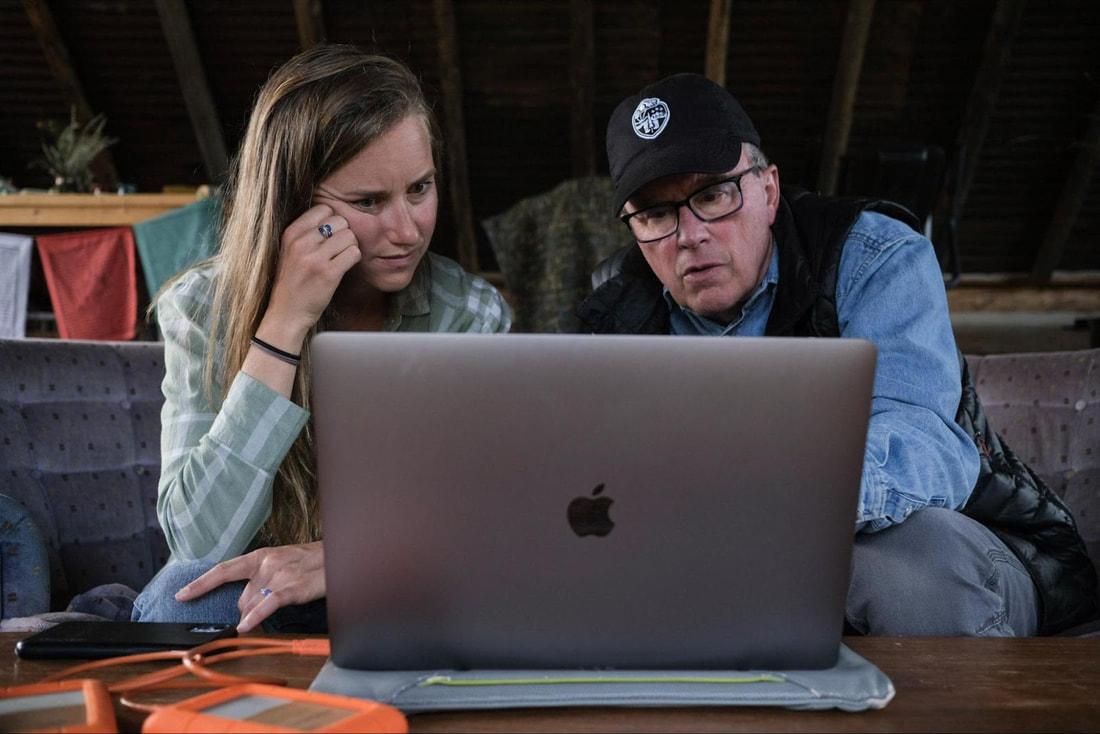

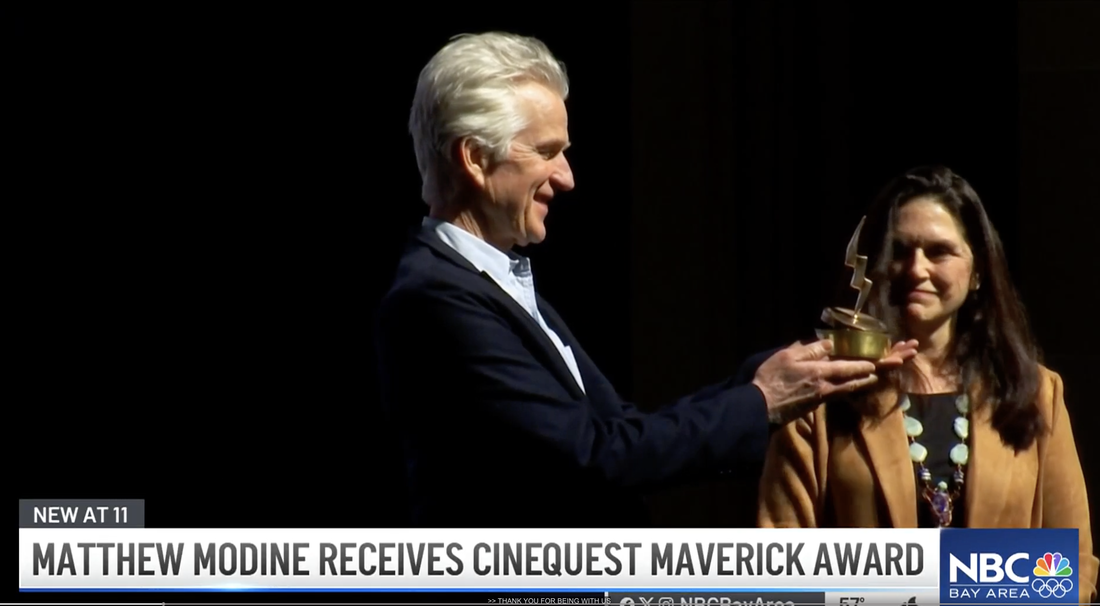


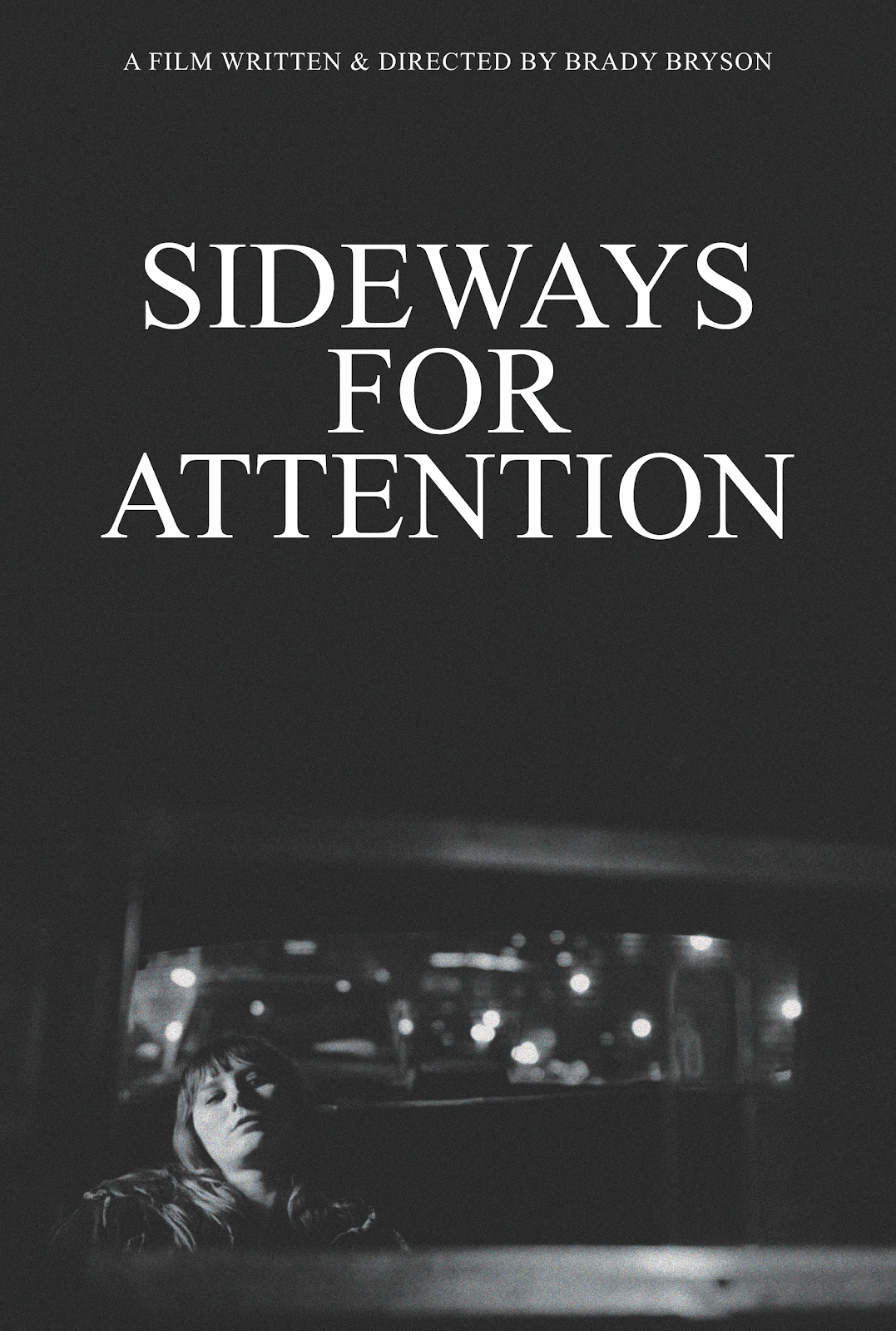
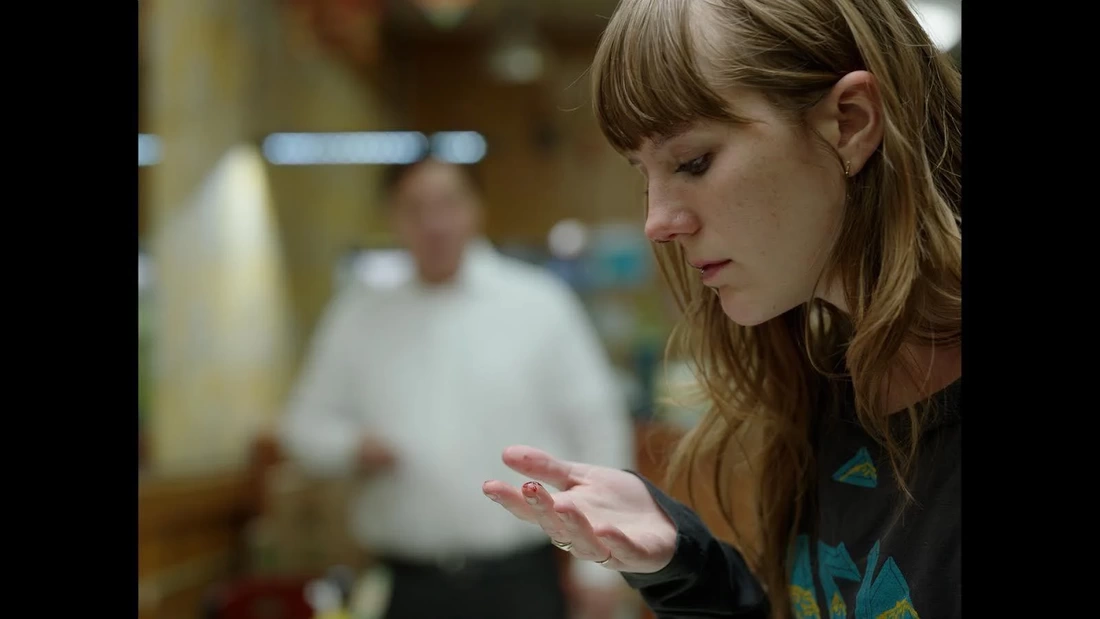
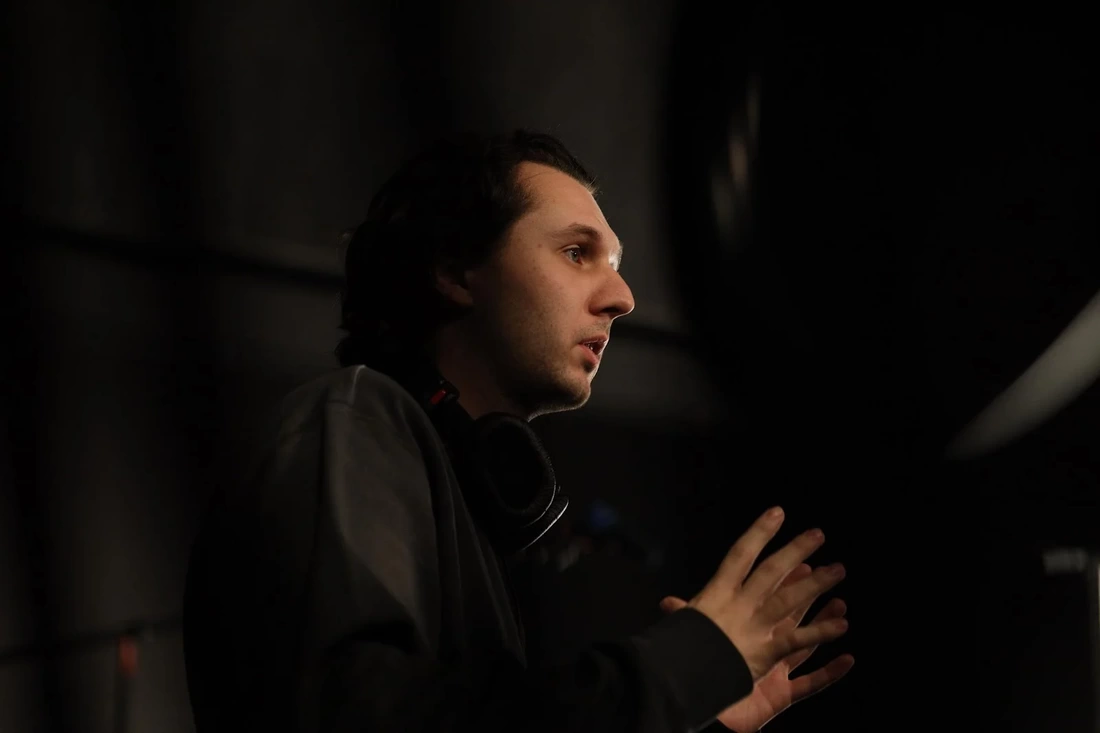







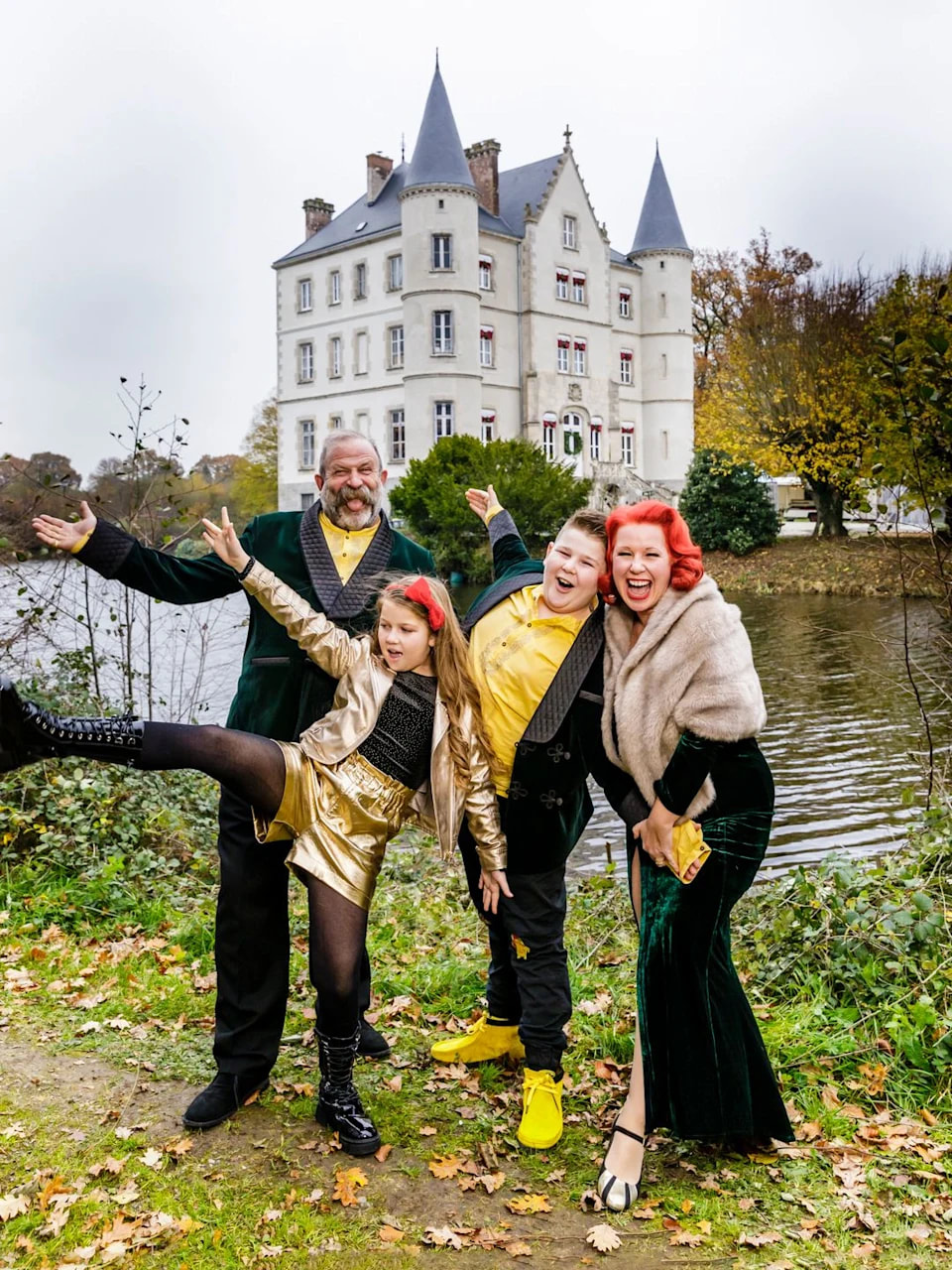






 RSS Feed
RSS Feed